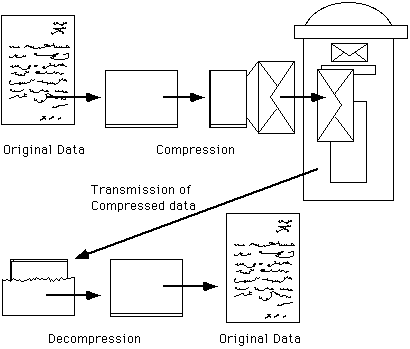Compression is analagous to folding a letter before placing it in a small envelope so that it can be transported more easily and cheaply. Compressed data, like the folded letter, is not easily read and must first be decompressed, or unfolded, to restore it to its original form.
The success of data compression depends largely on the data itself and some data types are inherently more compressible than others. Generally some elements within the data are more common than others and most compression algorithms exploit this property, known as
redundancy. The greater the redundancy within the data, the more successful the compression of the data is likely to be. Fortunately, digital video contains a great deal of redundancy and thus is very suitable for compression.
A device (software or hardware) that compresses data is often know as an
encoder or
coder, whereas a device that decompresses data is known as a
decoder. A device that acts as both a
coder and
decoder is known as a
codec.
A great number of compression techniques have been developed and some lossless techniques can be applied to any type of data. Development, in recent years, of lossy techniques specifically for image data has contributed a great deal to the realisation of digital video applications.
Compression techniques used for digital video can be categorized into three main groups:
[
General purpose compression techniques]
© Colin E. Manning 1996

